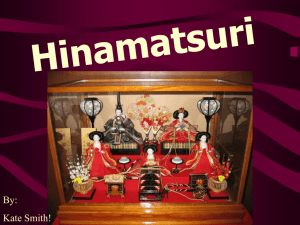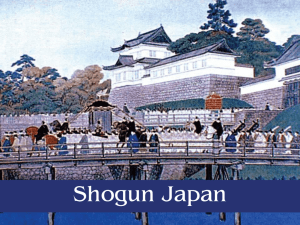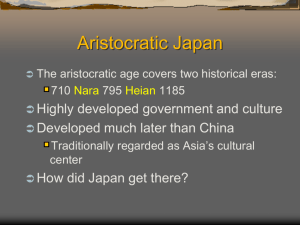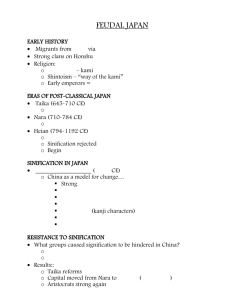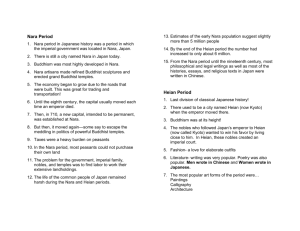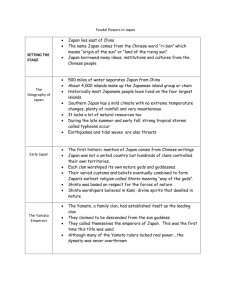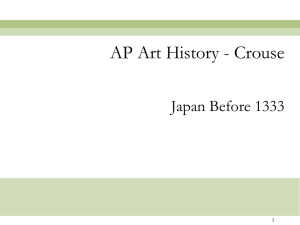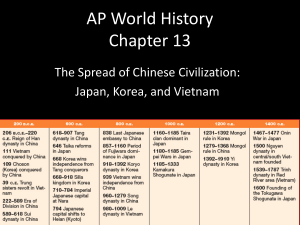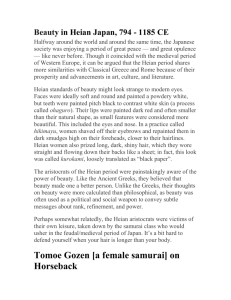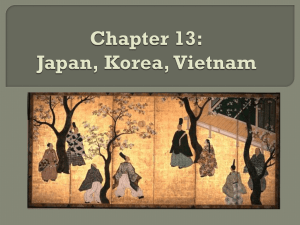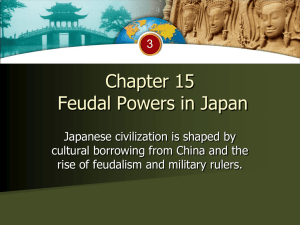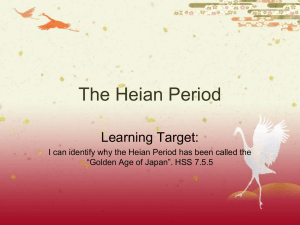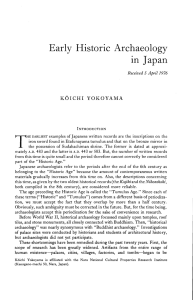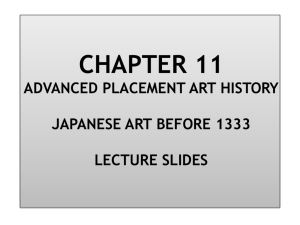CIVILIZATION: Early Japan(Nara and Heian Periods)
advertisement
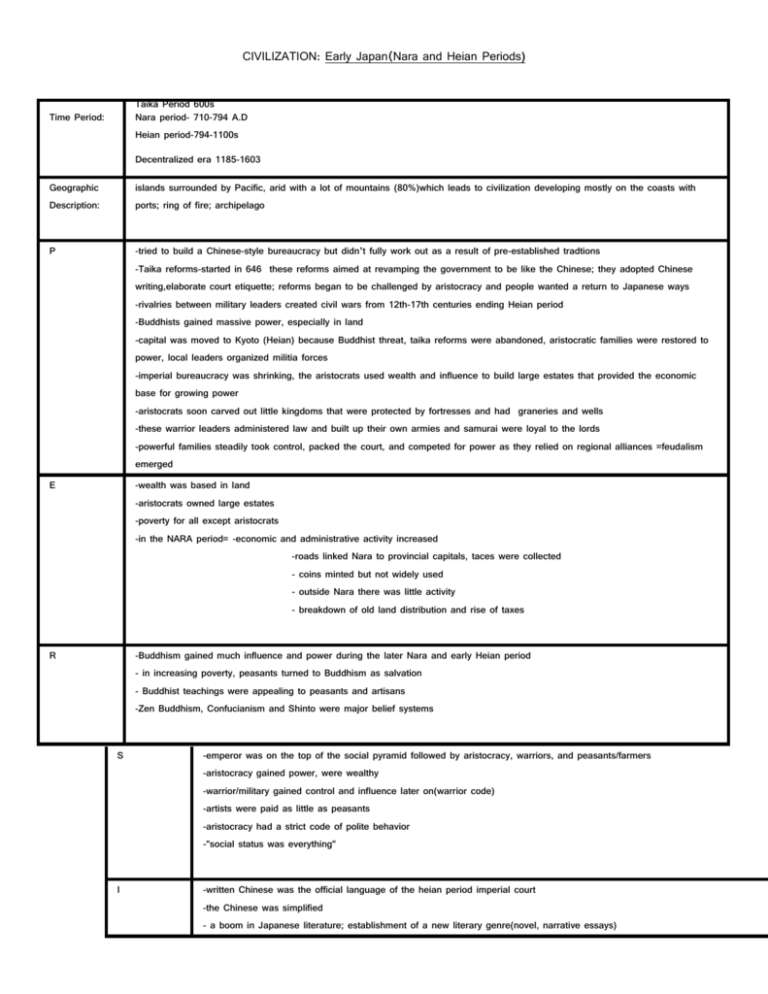
CIVILIZATION: Early Japan(Nara and Heian Periods) Taika Period 600s Nara period- 710-794 A.D Time Period: Heian period-794-1100s Decentralized era 1185-1603 Geographic islands surrounded by Pacific, arid with a lot of mountains (80%)which leads to civilization developing mostly on the coasts with Description: ports; ring of fire; archipelago P -tried to build a Chinese-style bureaucracy but didn’t fully work out as a result of pre-established tradtions -Taika reforms-started in 646 these reforms aimed at revamping the government to be like the Chinese; they adopted Chinese writing,elaborate court etiquette; reforms began to be challenged by aristocracy and people wanted a return to Japanese ways -rivalries between military leaders created civil wars from 12th-17th centuries ending Heian period -Buddhists gained massive power, especially in land -capital was moved to Kyoto (Heian) because Buddhist threat, taika reforms were abandoned, aristocratic families were restored to power, local leaders organized militia forces -imperial bureaucracy was shrinking, the aristocrats used wealth and influence to build large estates that provided the economic base for growing power -aristocrats soon carved out little kingdoms that were protected by fortresses and had graneries and wells -these warrior leaders administered law and built up their own armies and samurai were loyal to the lords -powerful families steadily took control, packed the court, and competed for power as they relied on regional alliances =feudalism emerged E -wealth was based in land -aristocrats owned large estates -poverty for all except aristocrats -in the NARA period= -economic and administrative activity increased -roads linked Nara to provincial capitals, taces were collected - coins minted but not widely used - outside Nara there was little activity - breakdown of old land distribution and rise of taxes R -Buddhism gained much influence and power during the later Nara and early Heian period - in increasing poverty, peasants turned to Buddhism as salvation - Buddhist teachings were appealing to peasants and artisans -Zen Buddhism, Confucianism and Shinto were major belief systems S -emperor was on the top of the social pyramid followed by aristocracy, warriors, and peasants/farmers -aristocracy gained power, were wealthy -warrior/military gained control and influence later on(warrior code) -artists were paid as little as peasants -aristocracy had a strict code of polite behavior -"social status was everything" I -written Chinese was the official language of the heian period imperial court -the Chinese was simplified - a boom in Japanese literature; establishment of a new literary genre(novel, narrative essays) -literacy was only common among the court and Buddhist clergy -national anthem "kimi Ga yo" was written during the heian period -"The Tale of Genji"- one of the first novels written by Lady Muraski A Heian court life- complex palaces and gardens, buildings of unpainted wood, sliding panels, matted floors - fish ponds, fine gardens -poems were written on painted fans buildings reflected Chinese architectural styles Decline: -feudalism emerged, decentralizing power when powerful families began to influence court -Chinese influence decreased -collapse of centralized authority -Japan became divided and won’t unite until Tokugawa Shogunate 1603 Global -Nara court introduced Chinese civilization by sending diplomatic people to the Tang court every 20yrs connections/ -relations with Korea were first peaceful with diplomatic exchanges (Korean cultural bridge) interactions: 600-800s, Japan borrowed a lot from the Chinese including their system of writing, tea ceremony, architecture, Confucianism but civil service test
